Improving Hindustan University's Campus Dining Experience
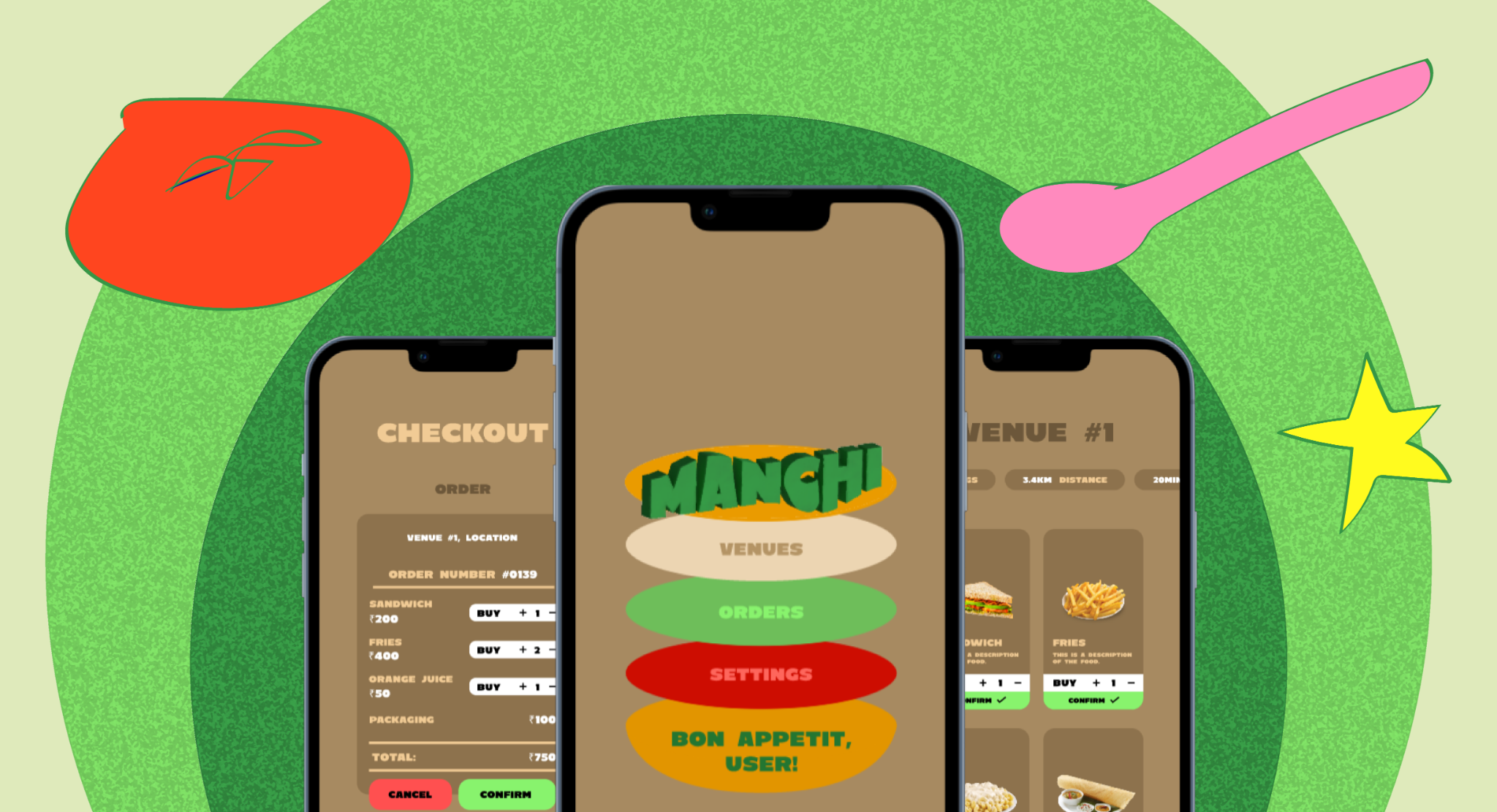
Introduction
In Interaction Design class at Hindustan University, we had to work on designs that solved the issue of "point A to point B" food takeout where the everyday food delivery business application cannot be used in technicality.
In general, this entailed the question of understanding the food servicing layout of our college and how it functions both timing and location-wise. I explored the possibilities and constraints that can shape or break the interactivity of the product design system as a whole in regard to those elements.
Tools + Software Used

Design Methodology
Understand → Define → Sketch → Decide → Prototype → Validate
Google's Design Sprint Process
Problem Statement
I started by writing down a statement that would give a clear sense of direction for this assignment.
- User: College students
- Need: Food
- Goal: Ordering meals
“What can I do to help college students order meals quickly and efficiently within the campus?”
Mind Mapping
I encapsulated many mind maps in a single session to gather my thoughts and bring new ideas into the fray.
Free Association Keys: Stove, Hear, Food, Disk, Bring
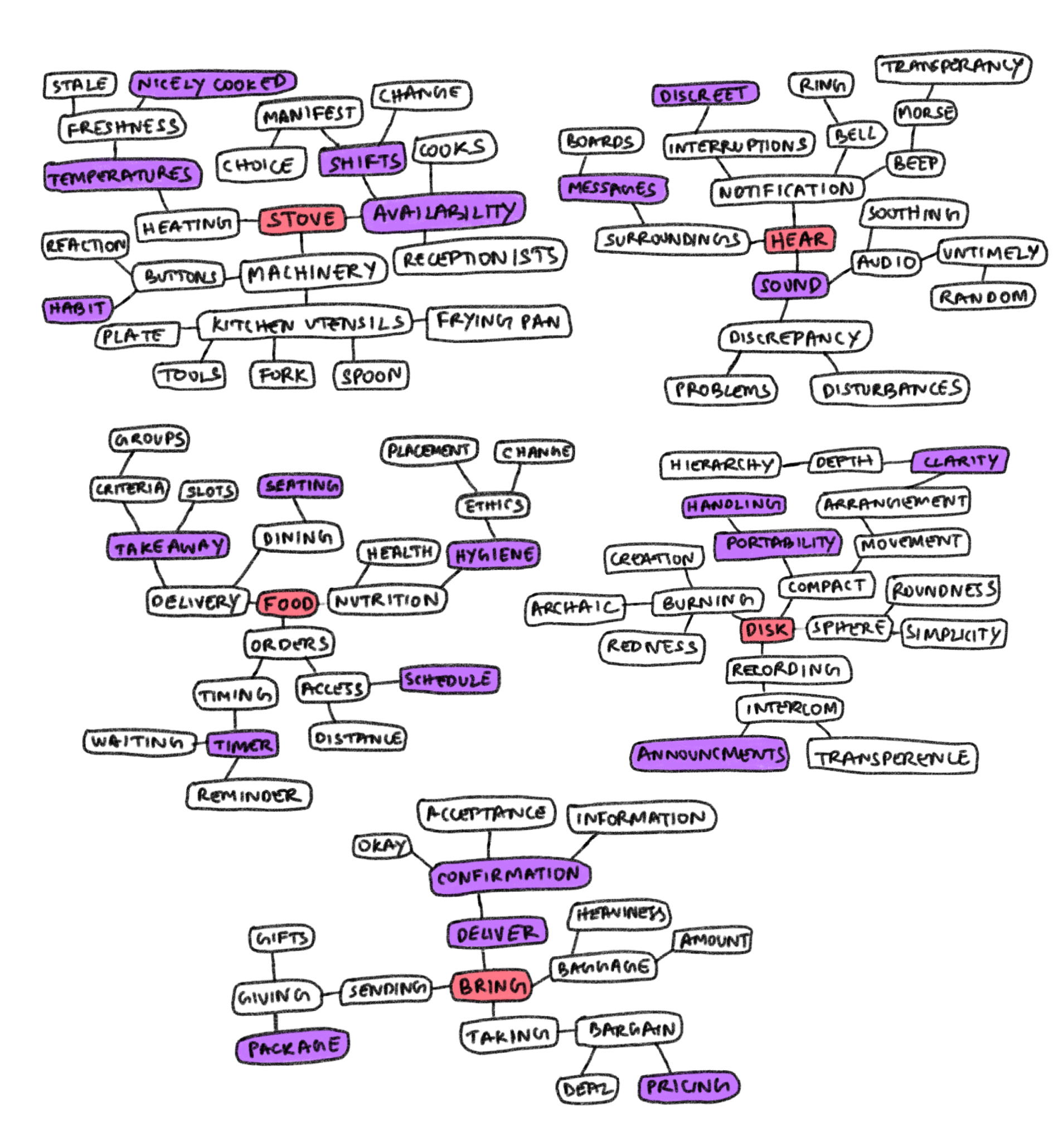
From the mind maps above, I was able to derive the following keywords:
Seating, Hygiene, Schedule, Takeaway, Timer, Confirmation, Package, Pricing, Deliver, Departments, Variety, Tie-ups, Affiliations, Notification, Sound, Discreet, Messages, Shifts, Availability, Temperatures, Nicely Cooked, Habit, Clarity, Announcements, Portability, Handling
Cubing
To gain different perspectives on the problem and the variables surrounding it, I completed the cubing technique. This activity elaborates on six different ideations that span through compartmentalized yet all-encompassing sections.
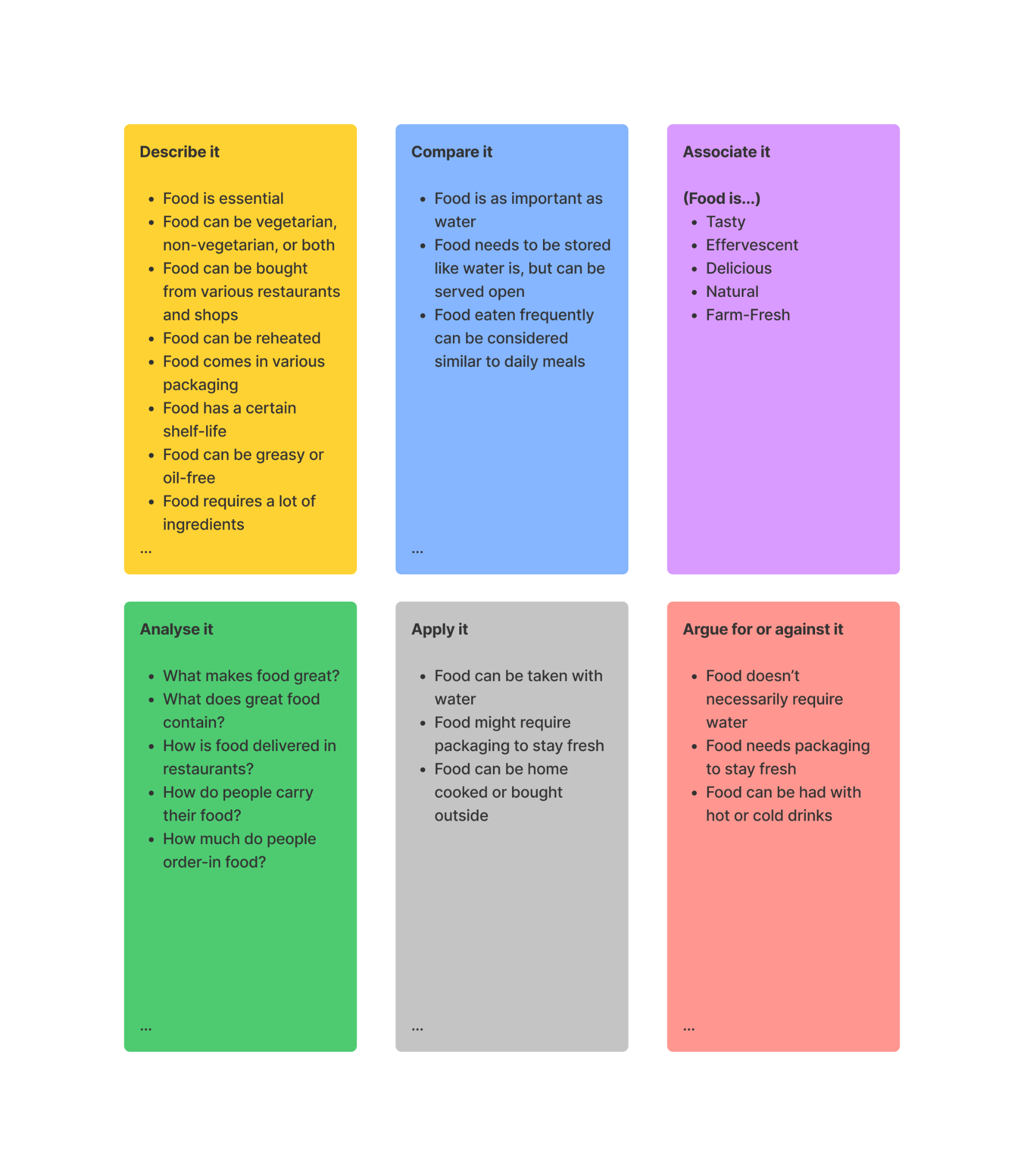
Desktop Research
Combining the outputs from the last two methods, I had starting points for in-depth research. I sifted through various verified publications and articles online for information that can organically create a strong feature model for the product going forward.
Concepts + Domains
-
Pre-Process Waits: These seem to be most dissatisfying when the customer has a reservation, an appointment, or other expectation of timely service.
-
Online Food Delivery Service (OFDS): Information related to the restaurant, menu, location, food price, and delivery price are a must in OFDS, so the users are fully informed before making a purchase.
-
Experience Economy: It is a condition where customers are willing to pay more if they enjoy the experiential value of the products/services. Experiential value is created through the interaction between the users and business providers.
- Food Safety: To improve food safety in restaurants, it is essential to find methods that influence the attitudes of Restaurant Business Operators (RBOs) and to provide high-quality training to RBOs regarding food hygiene.
Qualitative Competitor Analysis
To understand and learn more about how dining and takeout programs work, I made a chart outlining the features that similar and content adjacent businesses have to offer.
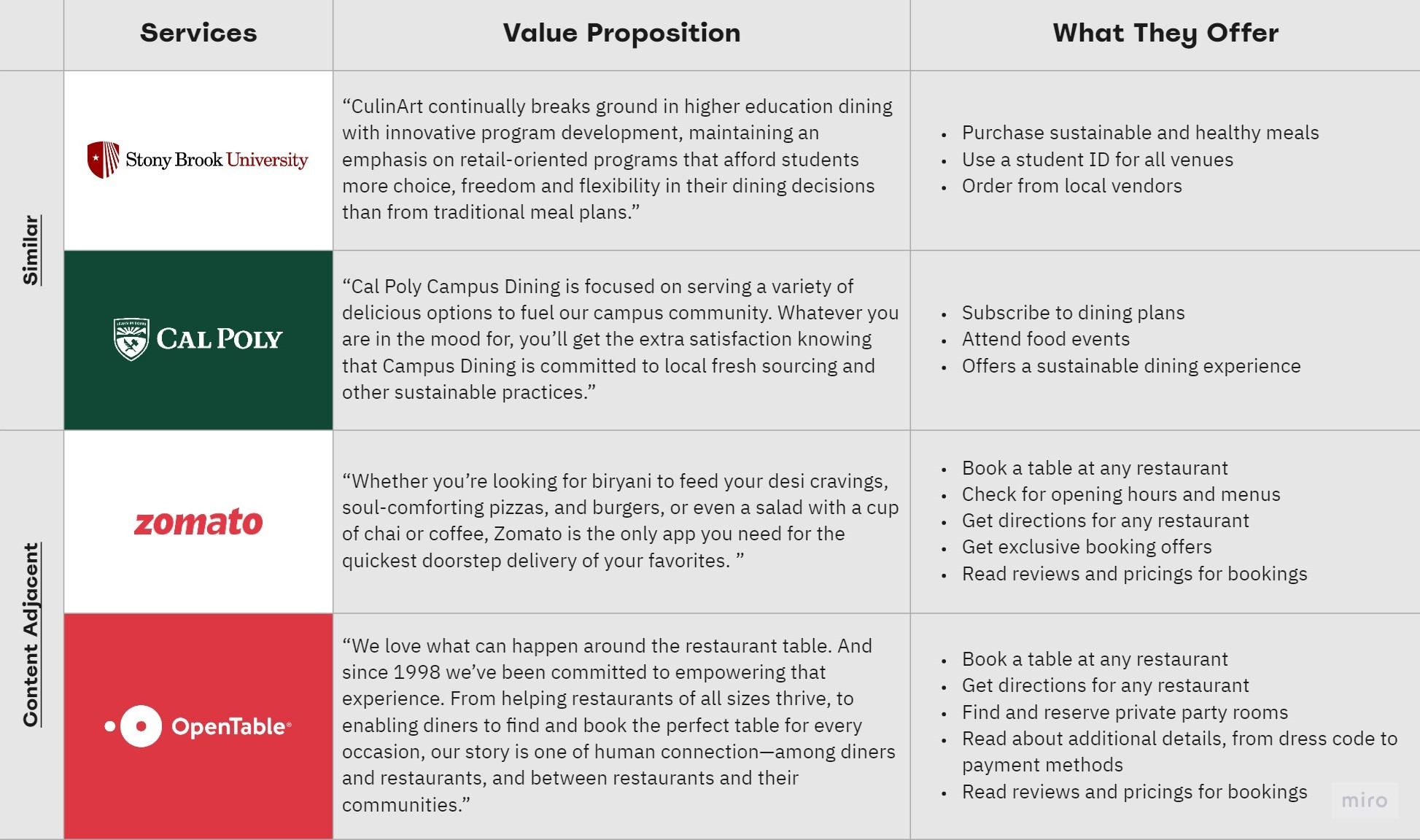
Survey (Quantitative Input)
I created a small survey that incorporated both dichotomous and multiple-choice questions related to perceived feelings about the current dining experience.
Participant Criteria
The participants were recruited from food venues which they frequent at college. They have to be enrolled at Hindustan University and should’ve at least ordered from and eaten in one of the food venues. Ninety people were involved in the study.
Dichotomous Questions:
- Would you be open to downloading an application for dining and takeout services?
- Would you be interested in campus meal subscriptions?
- Does the idea of digitally ordering campus food seem appealing to you?
- Does the idea of booking a table before dining in a campus food venue seem appealing to you?
Multiple-Choice Questions:
- Most preferred / used payment method?
- How often do you repeat your order?
- When would you like the campus menu to be updated for the day?
- How would you want your order to be verified after payment?
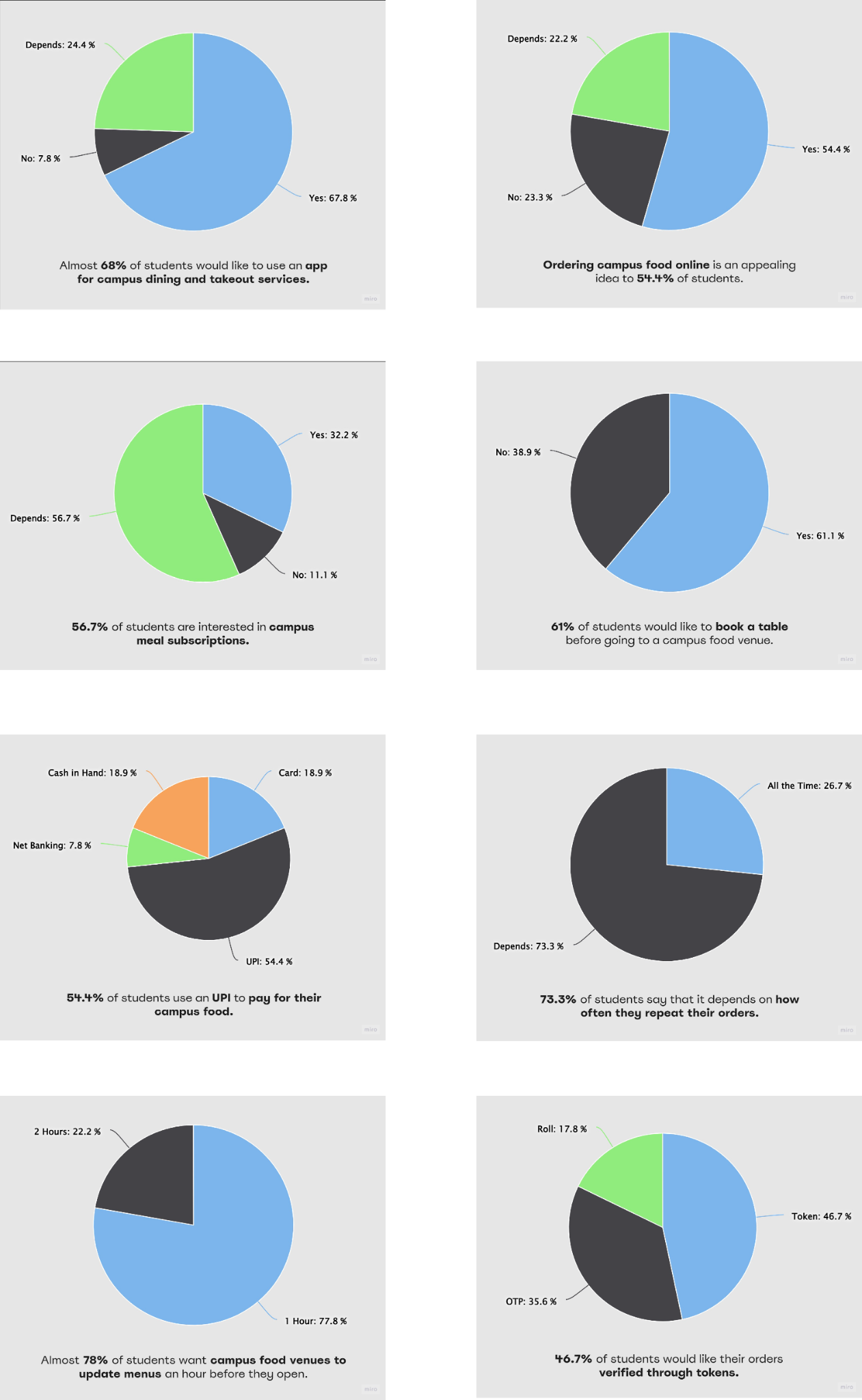
Findings
After collecting and aggregating data from the survey, the results are listed below:
- Mobile Application: Participants like the idea of using an application for ordering their food inside the campus. This can solve the crowding issues that are faced by frequenting customers.
- Meal Subscriptions: Participants are not averse to the idea of meal subscriptions, but it entirely depends on the menu and what the venues offer.
- Pre-Orders: Participants are interested on the idea of takeout food as it might reduce the time spent on scheduling commutes from classes to venues and vice versa.
- Menu Updates: Participants want quick menu updates to order their food, preferably before an hour.
Archetypes
From the totality of the research done, I created two personas that would fit the bill of the target audience for the product and listed the benefits they would obtain.
Persona 1: College Student
This user can benefit from a cohesive and consistent food plan for months or weeks on end. Ease of meal purchases is a definite plus. Students usually have a structured academic life and it would help them immensely to incorporate the same in their food habits since their time is limited.
Persona 2: College Staff and Employees
This user can benefit from quick and efficient ordering options since they are always on the go. Like college students, ease of meal purchases is a definite plus to this archetype. Also, they would prefer to know if there are any seating arrangements since they are primarily from the middle age and elder brackets. Work timings are flexible for ordering food since there aren't many restrictions excluding the lecture timings.
Experience Mapping
This experience mapping chart illustrates the net negative of the current dining and takeout at the campus governed by a slew of dependencies.
Players: Students, Cashiers, Cooks / Food Servers, Lecturers
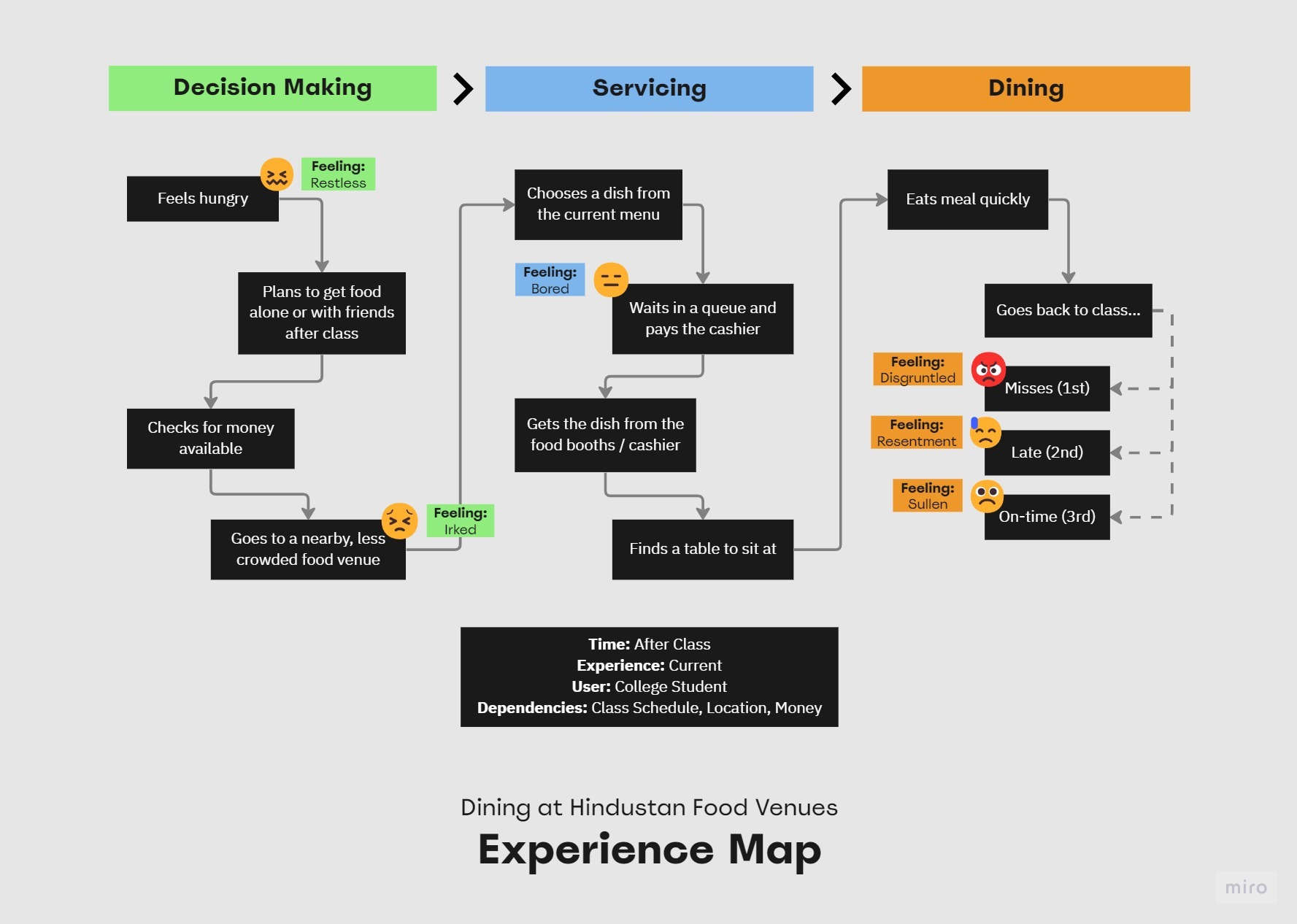
Journey Mapping
Users gauging information and making decisions to dine or get takeout can be governed by a lot of internal and external factors. Representing the actions that lead up to the states (either current or future) can aid the design immensely.
User Journey Map 1: Ordering (Success)
- User: College Student
- Experience: Future
- Scenario: This user wants to order food from one of the venues on campus and confirm an order.
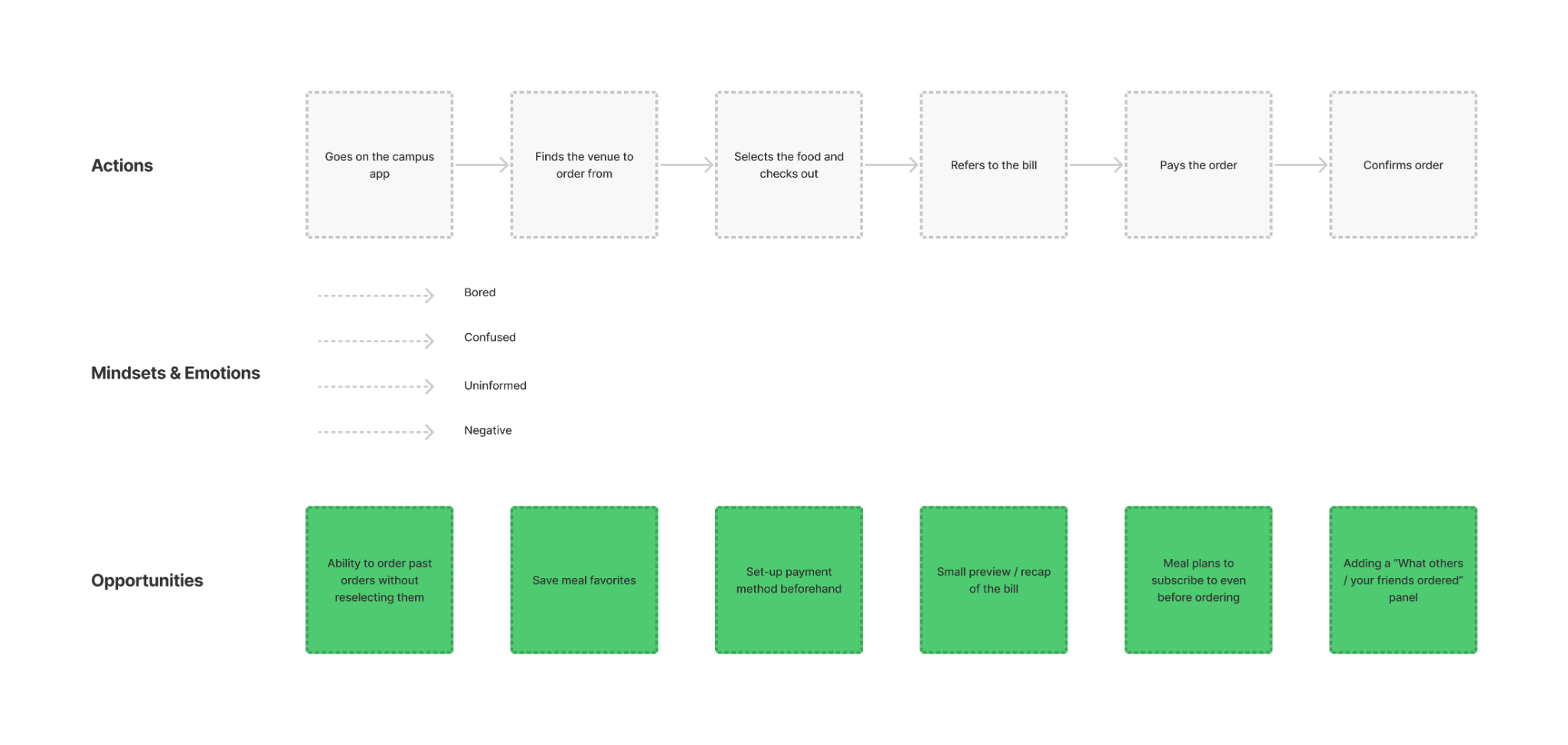
User Journey Map 2: Venue Information
- User: College Student
- Experience: Current
- Scenario: This user wants to know about all of the food venues on campus and pick out the best option for their current situation.
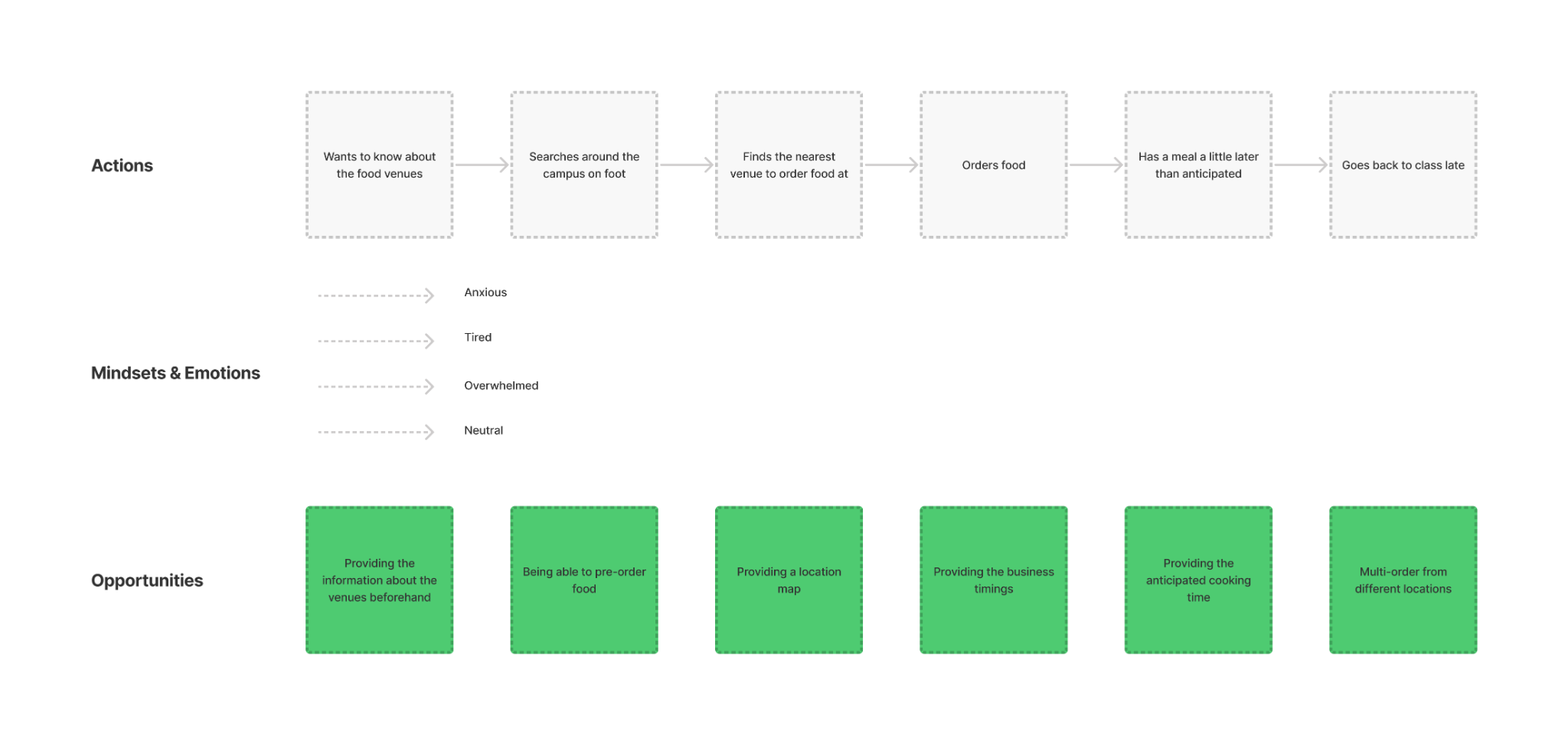
Task Flows
From the current state and the perceived future state, I created two task flows that serve as the basis of interactivity for a digital system.
Ordering (Success)
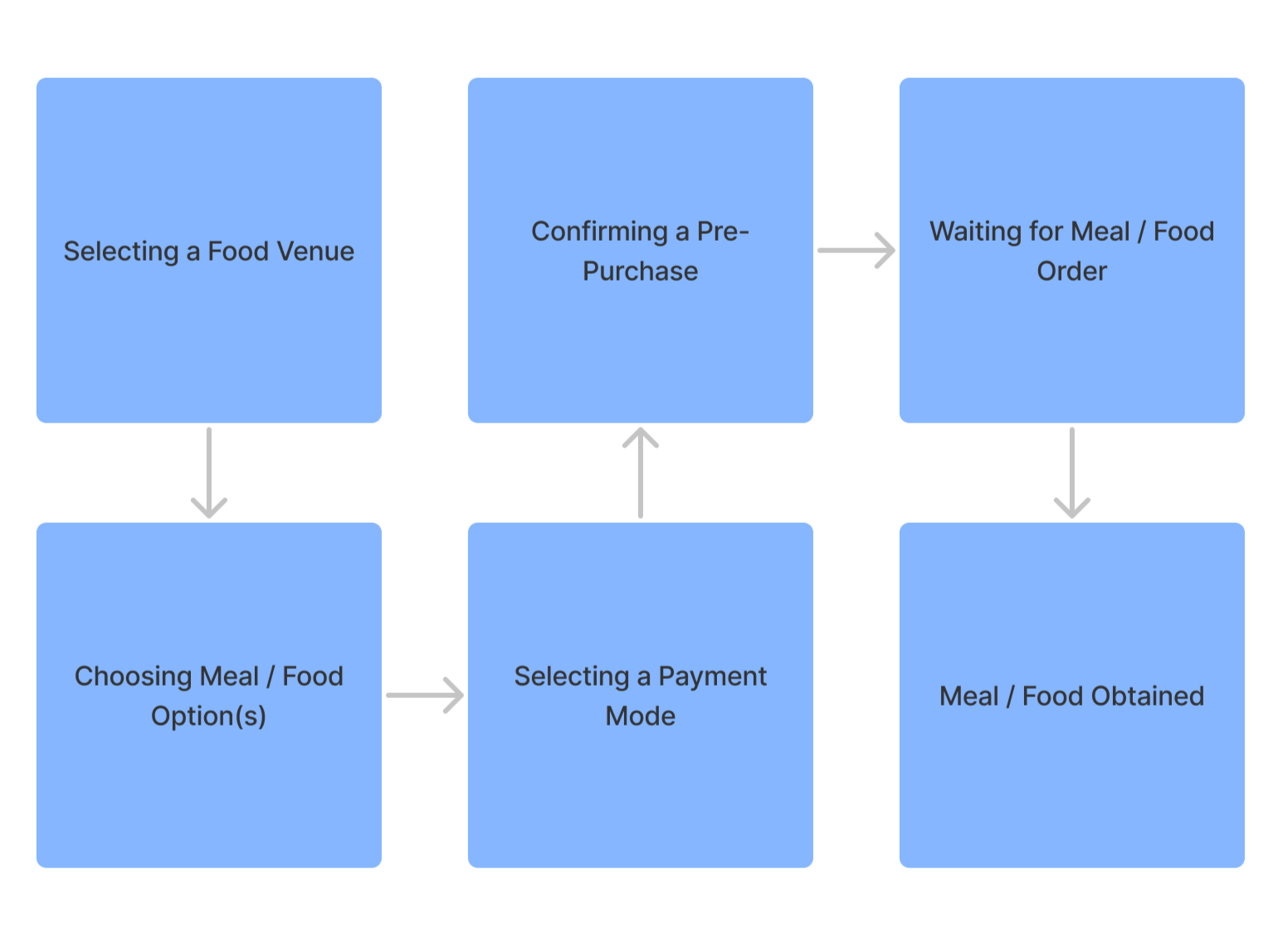
Venue Information
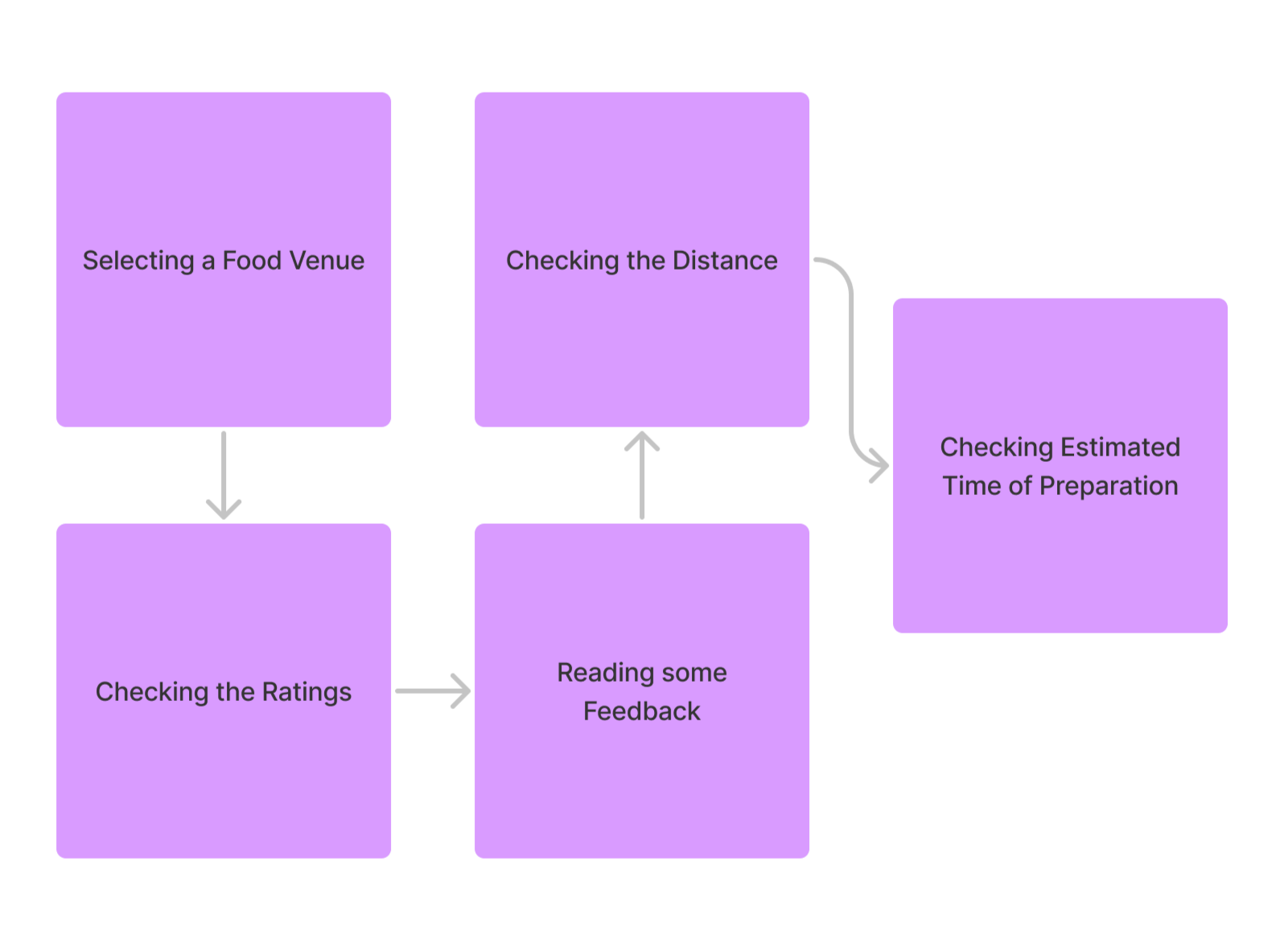
Low Fidelity Wireflows
These wireflows explain and illustrate the step-by-step representations of the screens for the hypothesized application flows.
Ordering (Success)
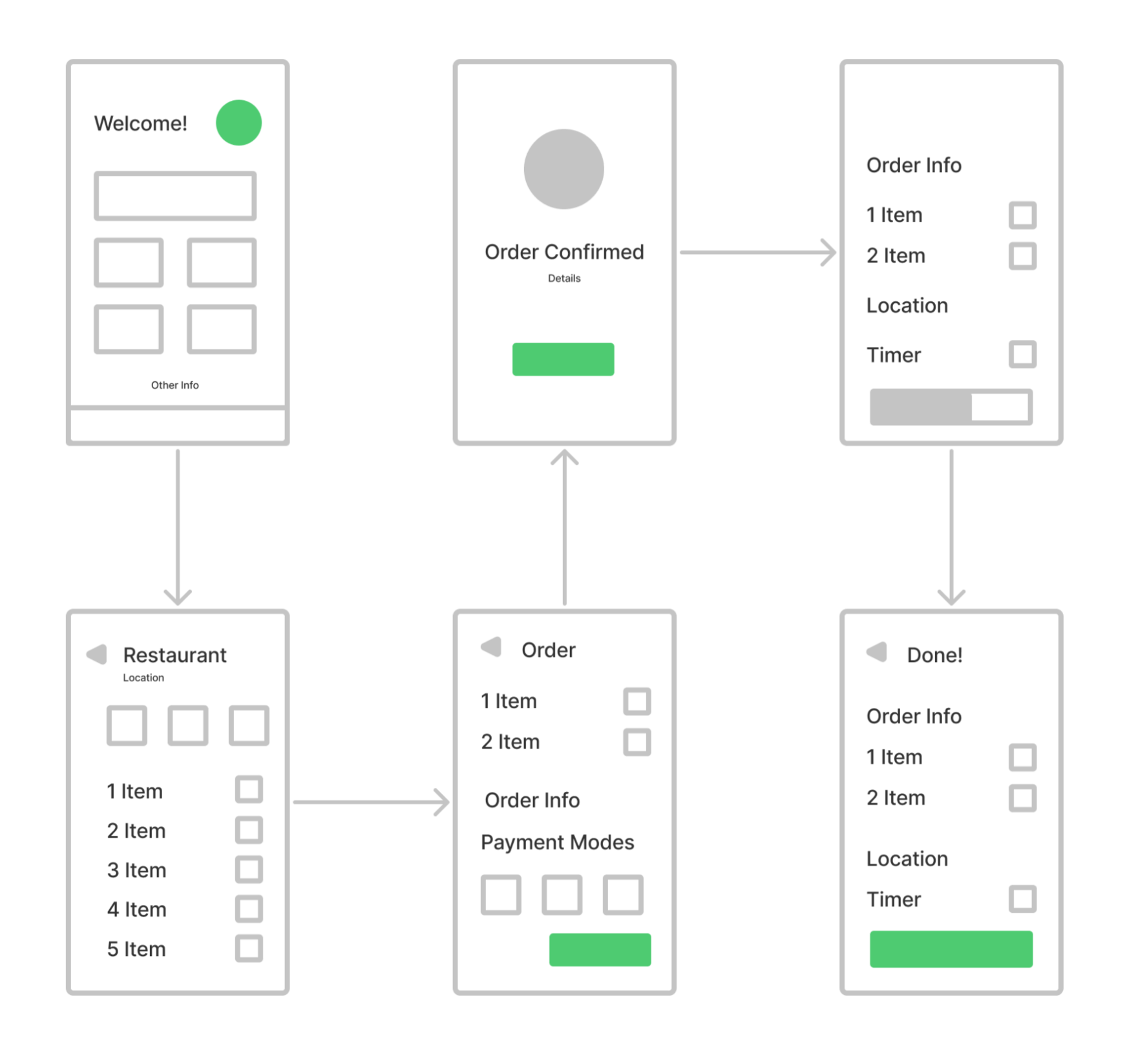
Venue Information
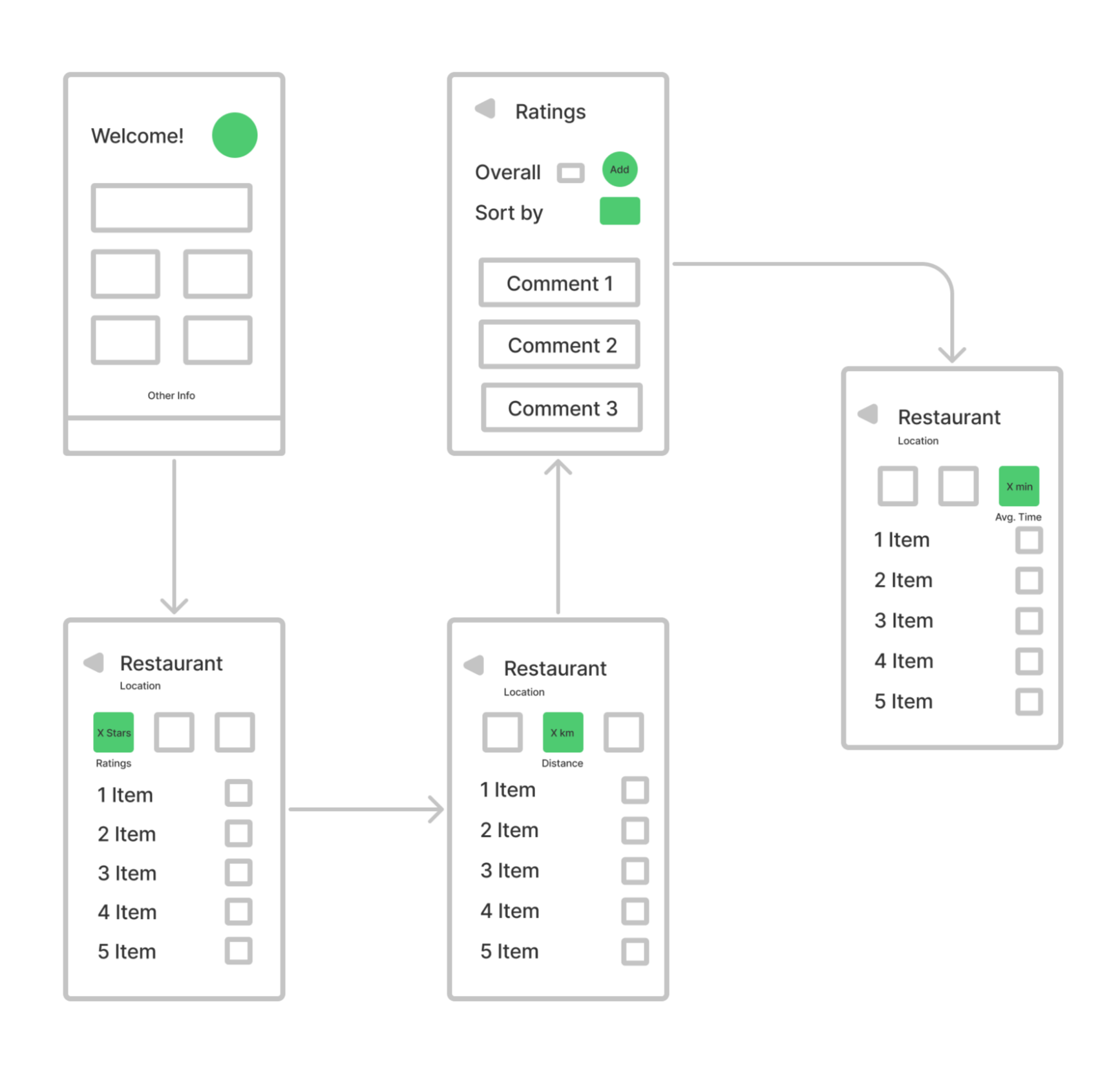
High Fidelity Wireflow
This application flow shows the user logging in, selecting a venue, ordering food, checking out, and waiting for the order until pickup.
Figma Link: https://www.figma.com/file/hCF...
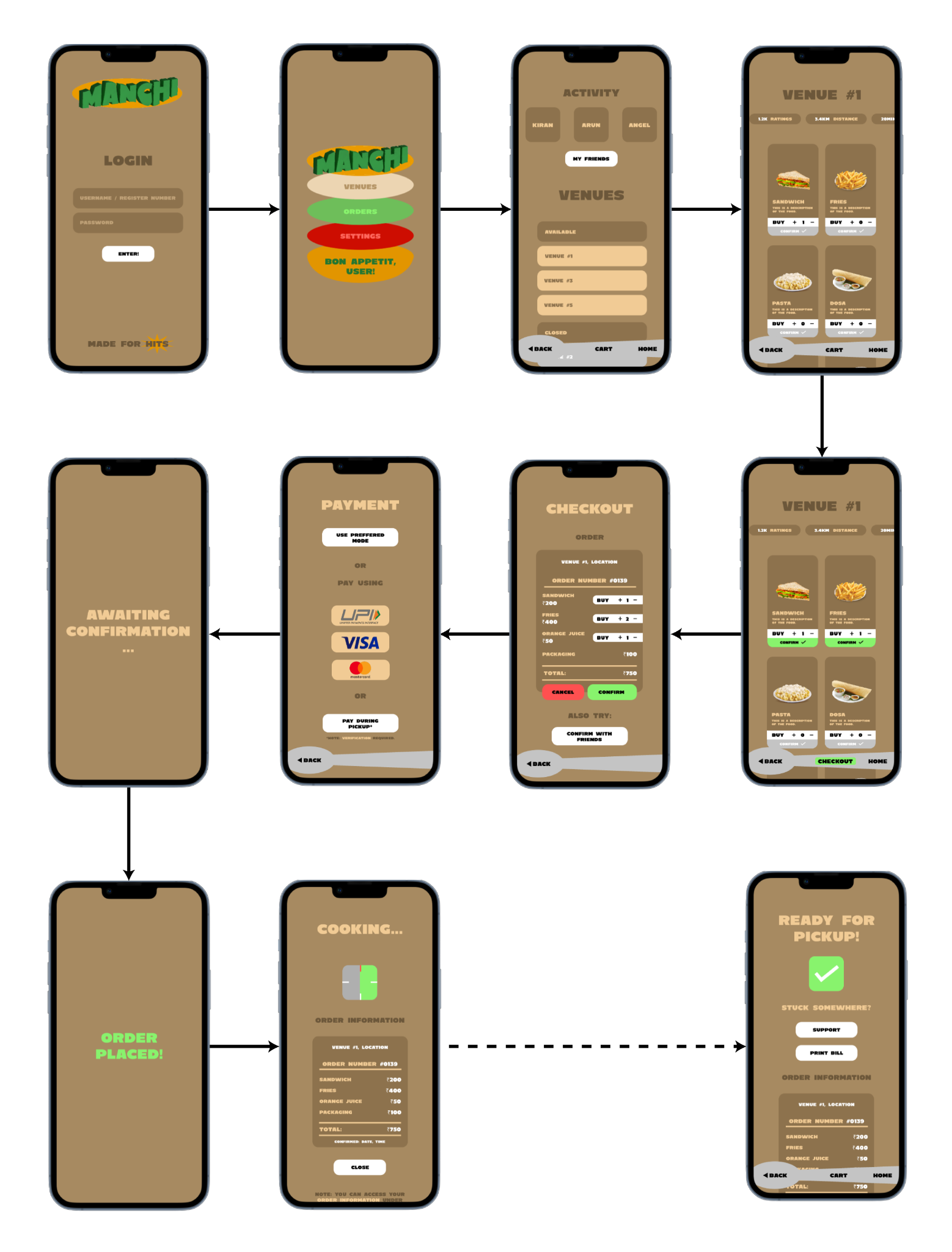
Conclusion
As I wrapped up this assignment, I had a newer perspective of the potential this product could have. Even though I only spent a few weeks, I discovered and learned the impact and the changes it might bring for users across other target groups too.
Missed / Potential Opportunities
It might be a good idea to look into the food service management system in detail by doing field studies and focus group interviews to cover its inner workings.
The scope might be broader than just dining. Students are not just concerned about ordering and eating food on time, they would like to know about school schedules, events, etc.
Post a comment